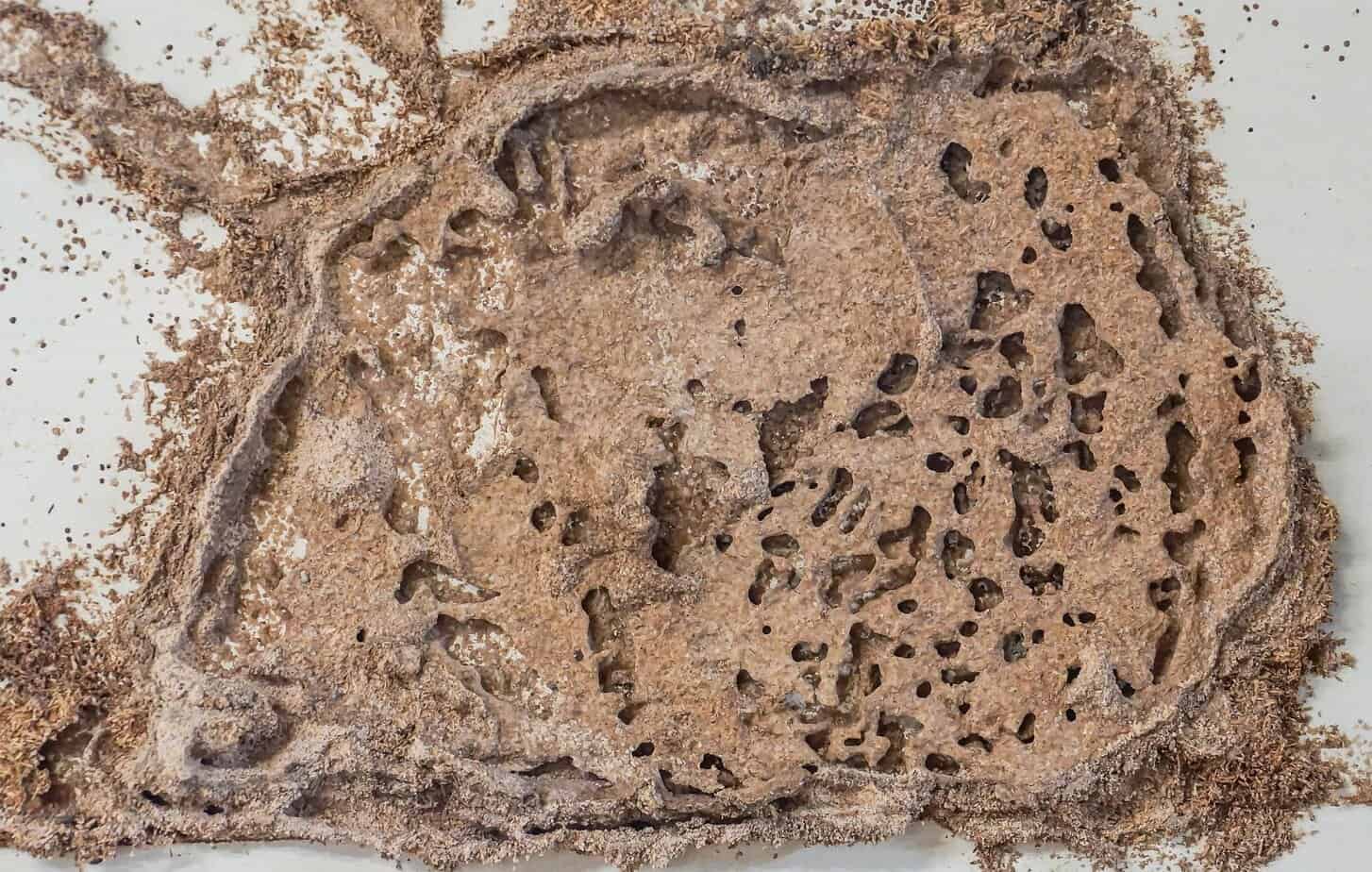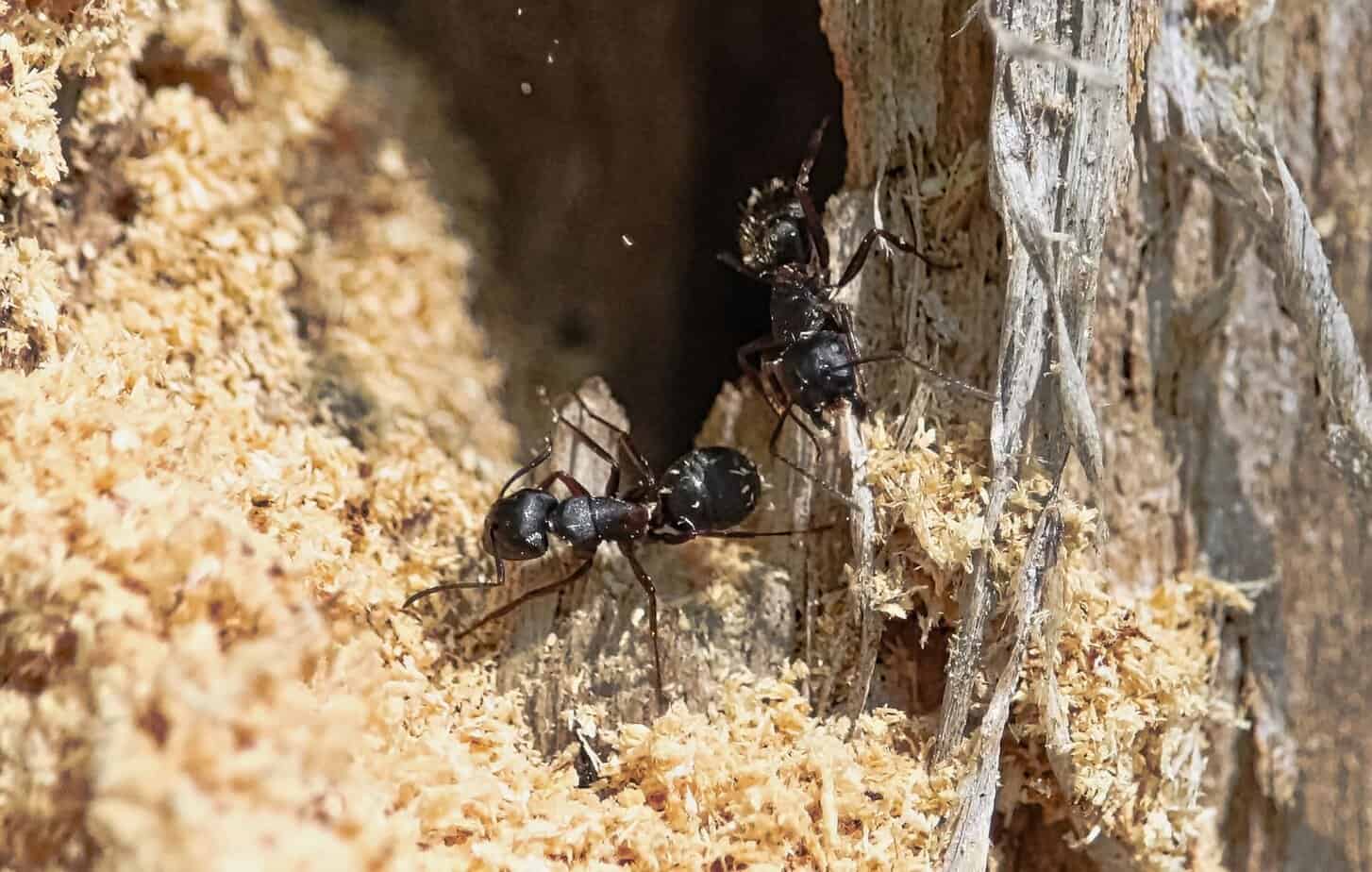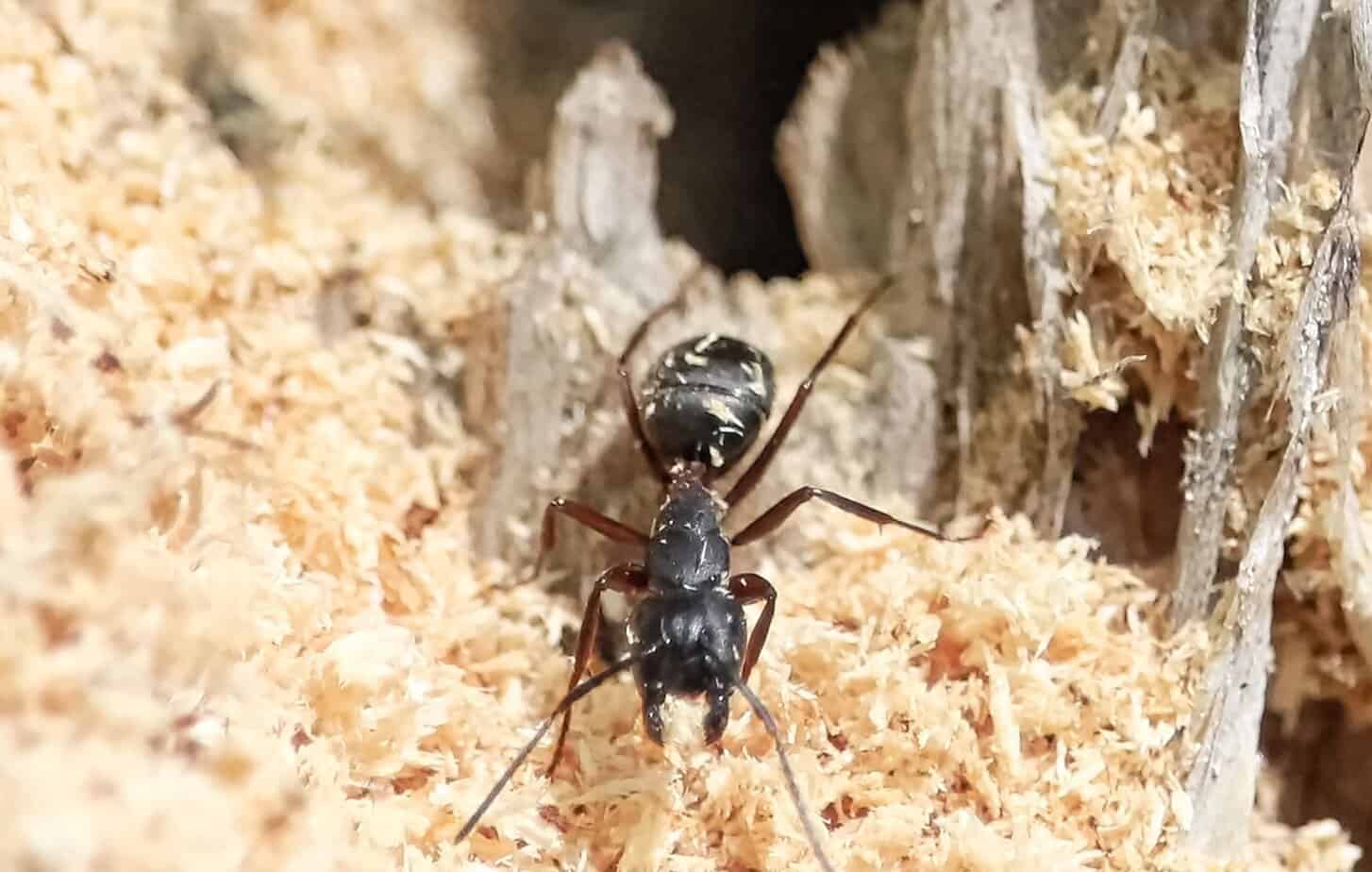Carpenter Ants vs Termites In Stockton | What’s The Difference?
Carpenter ants vs termites In Stockton, what is the difference? Are you concerned about potential termites or other wood-destroying pests in California? Even carpenter ants in Stockton, CA, can cause homeowners and business owners a big headache. These wood-boring insects can infest your property, causing severe damage. Discovering termites or carpenter ants on your property can be unsettling.
However, there are measures you can take to prevent infestations. If it is too late and you have an infestation, remember that professional help is always available. We can ensure that these destructive creatures are gone. Learning more about each species is the first step in understanding how they operate and how to eliminate them.
Physical Identification: Carpenter Ants vs. Termites In Stockton, CA
Several key features can distinguish carpenter ants from termites. Carpenter ants have a narrow waist with three distinct body segments, while termites possess a thick waist and a straight body. The antennae of carpenter ants are bent or “elbowed,” in contrast to the straight antennae of termites.
In the reproductive stage, carpenter ants have two pairs of wings, with the back wings smaller than the front wings, whereas termites have two pairs of equal-sized wings. Regarding coloration, carpenter ants can be black, red, or brown, while termites are typically white to light brown.
Social Insects Share Similarities
Let’s talk about their similarities. Both are social insects. They live in highly organized cooperative groups or colonies. The individuals in a colony exhibit a Division of Labor where different individuals take on specialized roles (e.g., workers, soldiers, and reproductive individuals like queens and drones).
Another key characteristic of social insects involves childcare or Cooperative Care. The colony members help raise young people, not just their offspring, and often have overlapping generations living and working together, sharing knowledge and responsibilities.
In addition, the individuals in these societies display fine-tuned communication skills. They coordinate activities using pheromones, body language, and other signals. Examples of social insects include ants and termites, as mentioned, and bees and wasps.
Carpenter Ants vs. Termites: Stockton Key Differences
Understanding the distinct behaviors, characteristics, and signs of infestation of carpenter ants and termites is crucial. This knowledge can lead to early detection and prompt action, ensuring effective resolution of the infestation.
Carpenter ants do not eat wood; they merely dig out tunnels with their jaws to create their nests. About 50,000 ants may live together in one of their nests. The colony is typically made up of 10,000–20,000 worker ants. Colonies mature in 3 to 6 years when reproductive ants swarm to mate and start a new colony. Swarmer ants have four wings, with the rear pair smaller than the front two. In addition, Carpenter ants have antennae that bend like an elbow, so they may appear broken to some.
Carpenter ants are the ones that leave sawdust-like piles of debris called frass. These ants prefer moist, decaying wood for nesting but can infest dry wood over time. Either way, the nests have smooth walls.
Depending on the species, a mature termite colony can house over 1 million termites. Unlike ants that remove portions of wood, termites eat wood and never stop eating it until it is gone. They only eat the cellulose in wood, paper, and plant material.

Subterranean termites find moist soil to build honeycomb or maze-like tunnels with mud-lined walls with their constant wood-eating. The Drywood variety finds dry soil to create smooth, sanded galleries that look quite different. Termite swarmers swarm with two pairs of wings that are all the same size, and their antennae are straight.
Carpenter Ant Individuals and Colonies
Carpenter ants have specialized roles as social insects, including reproductive ants (queens), worker ants, and swarmers (winged ants that emerge when the colony matures, typically after three to six years).
They prefer to nest in softened wood infested with fungus or retaining moisture. Excess moisture and rotting wood provide ideal conditions for carpenter ant colonies. Unlike termites, carpenter ants do not consume wood; instead, they tunnel through it to create their nests, expelling wood shavings as they work.
Termite Individuals and Colonies
Termites in California pose a serious threat to properties. According to the EPA, “the most common form of termite in most of the United States is the native subterranean termite. Other, less common, types of termites include the smaller drywood termite and the invasive Formosan termite”.
The three most common types found in California are:
- Dampwood Termites: These termites prefer high-moisture wood, which is often found in coastal and forested areas.
- Drywood Termites: These pests infest dry, untreated wood, such as attics, furniture, and framing.
- Subterranean Termites: The most destructive of the three, they build mud tubes to connect to their underground colonies while foraging for food.
Termites create large colonies, with some containing over one million individuals. They feed on wood around the clock. Worker termites construct tunnels to find food, soldier termites defend the colony, and swarmer termites reproduce to start new colonies.
Signs of an Infestation Include Termite Droppings and More
No homeowner in California wants to discover an infestation of carpenter ants or termites. These pests can cause significant damage if left unchecked, so taking proactive measures is crucial. Early detection is key, as it can lead to more effective resolution and control over the situation.
Frass is the excrement of insects and can appear as small, hard pellets or a sawdust-like material, depending on the species and their diet. Its presence is a key indicator of insect activity, particularly in wood, suggesting possible infestations by pests like termites, ants, beetles, or moths. This makes frass a useful tool for homeowners to identify and address potential insect infestations effectively.
Nutrient Source: Frass is a valuable source of plant nutrients, containing organic matter and essential elements that promote growth.
Ecosystem Role: Insects that distribute frass play a crucial role in the food chain by breaking down complex plant materials into simpler forms that bacteria and other organisms can easily decompose. Understanding this role can help us appreciate the intricate balance of nature.
Defense Mechanism: Some larvae use frass as a defense mechanism by covering themselves with it to deter potential predators.
Carpenter ant frass, or droppings, looks fine, wood-like, or like pencil shavings. You can typically find it near nesting sites, often in slit-like openings in wood. The frass may contain wood fragments, insect carcasses, or soil particles.
More About Ant Frass and Termite Frass

Carpenter ant frass, or droppings, looks fine, wood-like, or like pencil shavings. You can typically find it near nesting sites, often in slit-like openings in wood. Carpenter ants love to attack softened wood that has been infested with fungus. Carpenter ants create nests in wood by chewing through it, so their frass may contain wood fragments. Also, the frass from carpenter ants varies in size. For Carpenter ants, frass contains wood shavings, wood fragments, carpenter ant feces, soil and gravel, insect parts, and carcasses.
Where Can You Find Ant Frass In Stockton Homes?
- Near nesting sites can include window frames, door frames, areas with water-damaged wood, and roof lines.
- In slit-like openings within the wood where the ants are tunneling.
- The ants push the frass out of their tunnels beneath infested timber.
Why is Seeing Frass Important?
Look for frass, a fine, sawdust-like material or droppings left behind by carpenter ants, typically found near their nesting sites. You may also notice small piles of wood shavings or distinctive exit holes in the wood. Finding frass is a strong indicator of an active carpenter ant infestation. It can help you locate the nest, making it crucial to address moisture issues and seal entry points to prevent future infestations.
For termites, keep an eye out for mud tubes, which they create as protective tunnels. These are often visible along walls or foundations. If tapping on wood produces a soft or hollow sound, it may indicate internal damage caused by these pests. Drywood termite frass contains droppings or feces and digested wood. It is present all around termite nests.
Taking prompt action upon discovering any of these signs can help safeguard your home from further degradation and ensure a thorough pest control solution. Use PPE and clean up the frass with paper towels and a disinfectant.
Carpenter Ant Infestation Signs In Stockton

- Piles of sawdust or wood shavings near baseboards, windowsills, or door frames.
- Visible ants—especially large, black, or red ants.
- Soft rustling noises within walls as ants burrow into wood.
- Discarded wings near entry points like windows or doors.
Termite Infestation Signs: Termite Droppings and Termite Frass
- Droppings (frass) that resemble coffee grounds or tiny pellets (drywood termites).
- Hollowed-out wood or blistering paint indicates structural damage.
- Mud tubes, about the width of a drinking straw, appear along foundations or walls (subterranean termites).
- Discarded wings or dead termites, often after a swarm.
How to Prevent and Handle an Infestation
Preventing infestation of carpenter ants or termites in your California home is far easier than dealing with an established one. Here’s what you can do:
6 Prevention Tips
- Store firewood away from your home and remove dead wood near the foundation.
- Trim dead tree limbs and remove stumps to reduce nesting sites.
- Keep gutters clean and ensure water drains away from your home.
- Fix plumbing leaks and eliminate moisture in crawl spaces.
- Seal potential entry points, including cracks in foundations and siding.
- Ensure proper ventilation in attics and basements to reduce humidity.
What to Do If You Have an Infestation
If you suspect a carpenter ant or termite infestation, it’s essential to act fast. While DIY methods may offer temporary relief, a professional pest control service is the best way to ensure the problem is completely resolved. At Local Pest Solutions, we specialize in identifying and eliminating California carpenter ant and termite infestations. Our trained professionals can assess the extent of the damage, implement targeted treatments, and help you develop a long-term prevention strategy.
Which is Worse?
Carpenter ants and termites both cause wood damage, but they do so in different ways. Carpenter ants excavate wood to create nests without consuming it, preferring damp, decayed wood but capable of moving into dryer wood if necessary. In contrast, termites eat wood for nutrition and live inside the very wood they consume.
Colony sizes also differ significantly; carpenter ant colonies typically comprise thousands of individuals, while termite colonies can number in the millions. Regarding diet, carpenter ants feed on sugars, proteins, and insects, whereas termites rely solely on wood and cellulose materials for sustenance.
Termite colonies are more destructive because they eat wood, causing structural damage over time. Carpenter ants damage wood by excavating tunnels but do not eat it. However, their presence can weaken structures over time. Overall, termite damage is much worse.
How to Identify and Control Carpenter Ants & Termites in Your Home
1. Identifying the Infestation
Pay close attention to the following key indicators to identify whether you have Carpenter ants vs termites in Stockton.
- First, examine the wood damage. Carpenter ants create smooth, meticulous tunnels that slice cleanly through the wood, showcasing a polished appearance. In contrast, termites leave behind rough, muddy tunnels within the wood, marked by jagged and uneven trails.
- Next, look for sawdust, also known as frass. With carpenter ants, you may spot fine, granular sawdust scattered near entry holes, which signals their activity. However, termites consume the wood without leaving visible sawdust behind, making them harder to detect.
- Another sign to consider is the presence of mud tubes. Carpenter ants do not construct these tubes so that you won’t find any signs of them in your home. Termites ingeniously build intricate mud tubes on walls and foundations, providing shelter as they navigate between their food sources and nests.
- When inspecting for wings, note that carpenter ants have larger front wings than smaller back wings and are often scattered near windows. Conversely, termite wings are equal in size and typically shed in piles, signaling their reproductive swarms.
- Lastly, consider their activity time. Carpenter ants are primarily nocturnal, emerging under darkness to forage and expand their colonies. Termites, on the other hand, are relentless workers, engaging in their activities tirelessly around the clock, 24/7.
By recognizing these telltale signs, you can effectively pinpoint whether you have carpenter ants or termites, aiding in proper management and control.
2. Controlling Carpenter Ants
- Carpenter Ants: Remove moisture sources, seal cracks, and use bait or insecticides.
- Find the Nest: Carpenter ants nest in damp, decaying wood—check window frames, decks, and trees.
- Remove Moisture: Fix leaks and ensure proper ventilation to make the area less attractive.
Use Bait & Insecticides:
- Baits: Place near ant trails; they carry poison back to the nest.
- Insecticide Sprays: Use directly in nest openings.
- Seal Entry Points: Caulk cracks around windows, doors, and pipes.
3. Controlling Termites In Stockton, CA
- Termites: Use termiticides, baiting systems, and professional pest control for severe infestations.
- Use Bait Stations: These attract termites and poison the colony over time.
- Apply Liquid Termiticides: Treat soil around your home’s foundation to create a protective barrier.
- Remove Wood Contact with Soil: Store firewood away from the house and use concrete supports for wooden structures.
- Fix Leaks & Reduce Humidity: Termites thrive in moist environments, so keep your home dry.
- Professional Help: Large infestations may require fumigation or specialized treatments.
4. When to Call a Professional
- If you see structural damage (sagging floors, hollow-sounding wood).
- If termites are inside the house, not just around the yard.
- If DIY methods don’t reduce activity after a few weeks.
Contact Certified Termite Professionals at Local Pest Solutions
While carpenter ants and termites can damage wooden structures, including homes and commercial buildings, that is all they have in common. Their behavior, damage patterns, and treatment methods differ significantly. Carpenter ants excavate wood but don’t consume it, whereas termites eat wood continuously, leading to extensive damage. Knowing the signs of infestation can help you take early action to save your home from more extensive damage and repair costs.
At Local Pest Solutions, we are ready to get rid of your termites, carpenter ants, or other pests the same day in many cases. Our service area includes Lodi, Stockton, Elk Grove, Sacramento, Vacaville, and the surrounding areas. Call 209-309-7378 for our Integrated Pest Management Services to eliminate your current pests and prevent new ones from infesting your home.
